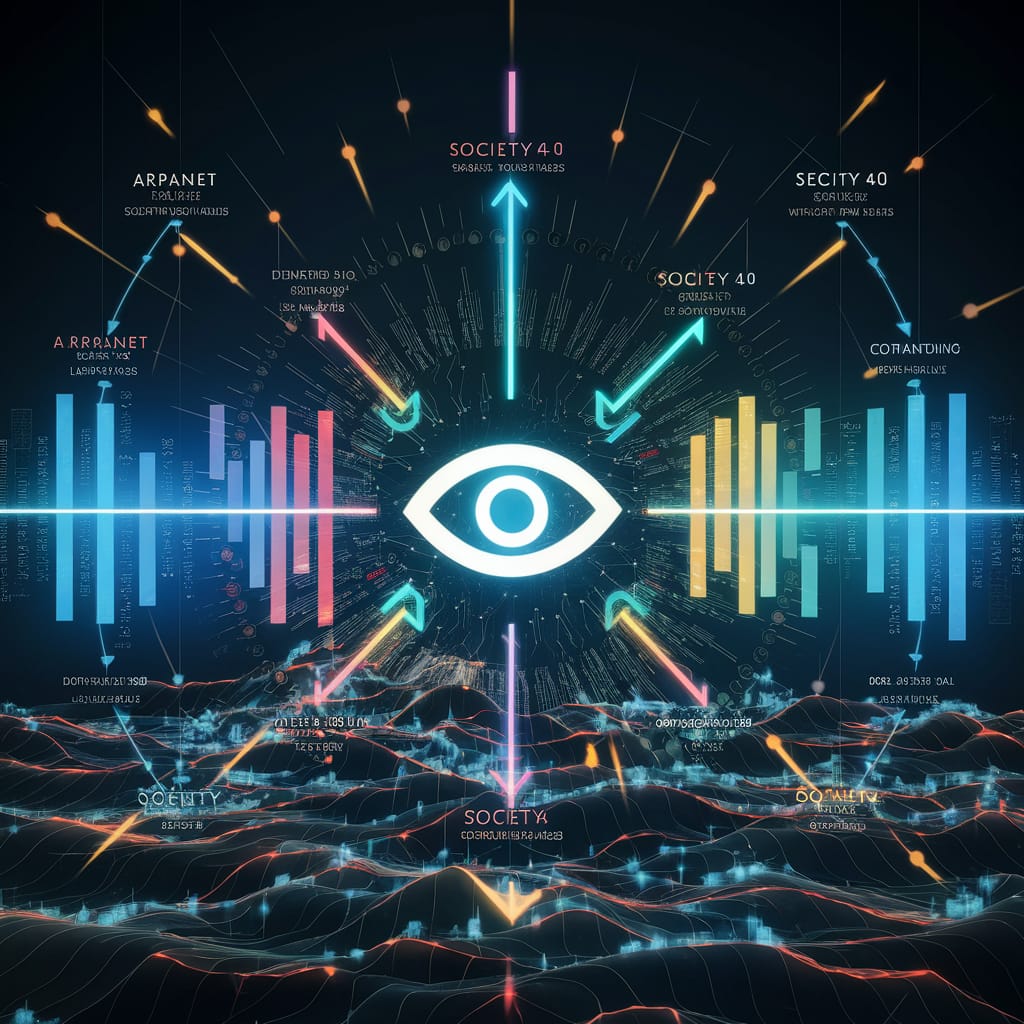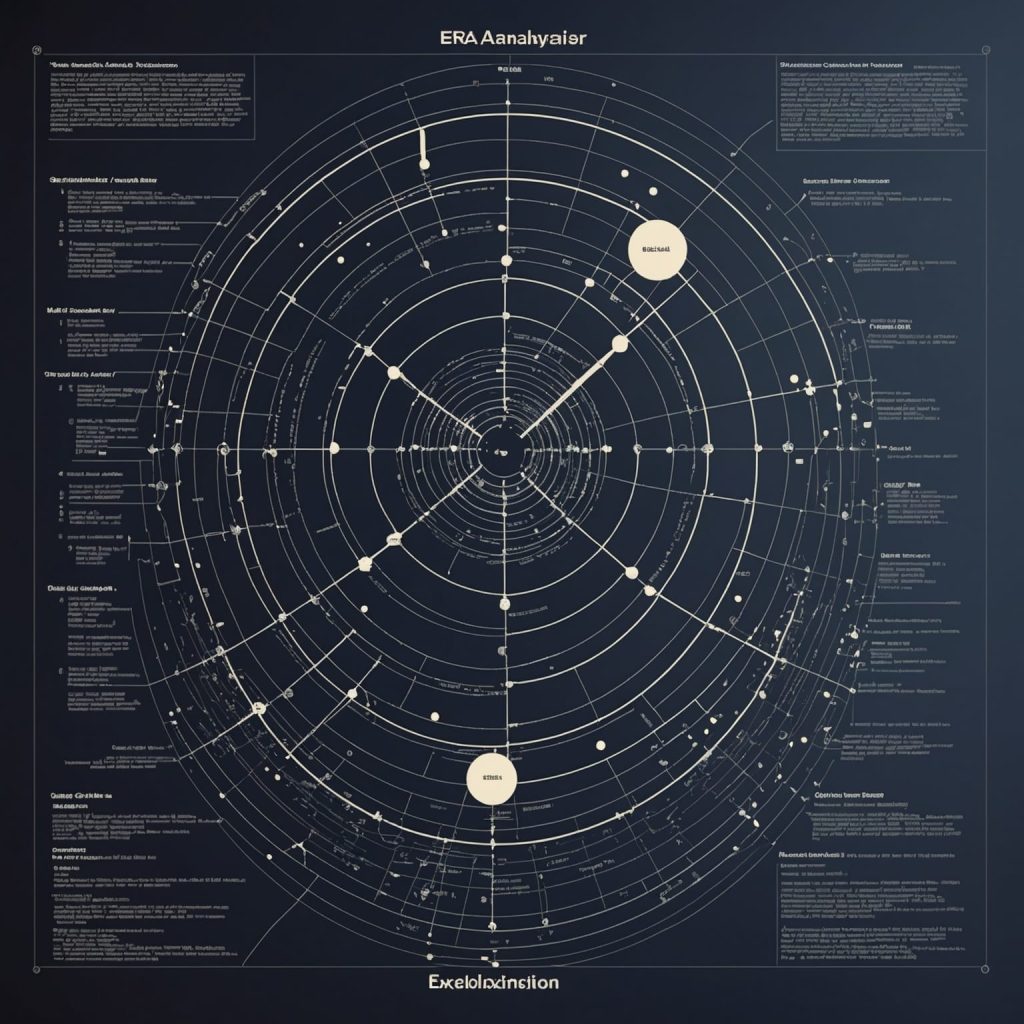The rapid advancement of technology over the past several decades has dramatically reshaped human society, ushering in new eras of innovation, connectivity, and societal transformation. This essay will explore the chronological progression and interconnections between key technological eras, from the early days of the Internet to the current age of generative AI.
1. The ARPANET Era (1960s-1980s)
The seeds of our modern digital age were planted in the 1960s with the development of ARPANET, a project funded by the U.S. Department of Defense. This early network laid the groundwork for what would eventually become the Internet. Key developments during this period included:
- 1969: The first ARPANET connection established
- 1970s: Development of packet switching technology
- 1983: TCP/IP protocol adopted, marking the birth of the Internet as we know it
The ARPANET era was characterized by limited connectivity primarily among research institutions and government agencies. However, it established the fundamental technologies and protocols that would enable global communication in the decades to come.
2. The World Wide Web Era (1990s)
Building on the foundation of the Internet, the World Wide Web revolutionized information sharing and accessibility. Key milestones include:
- 1989: Tim Berners-Lee proposes the World Wide Web
- 1990: First web server and browser created
- 1993: CERN releases the World Wide Web software into the public domain
This era saw the introduction of HTML and HTTP, which became the building blocks of web pages and communication protocols. The World Wide Web marked the beginning of the Internet’s transition from a specialized tool for researchers to a platform accessible to the general public.
3. Web 1.0 (Mid-1990s to Early 2000s)
The first iteration of the web, now retrospectively called Web 1.0, was characterized by:
- Static web pages with limited interactivity
- One-way communication from website owners to users
- The emergence of early e-commerce and online businesses
While revolutionary for its time, Web 1.0 was still primarily a “read-only” web, where users consumed information but had limited ability to contribute or interact.

4. The Fourth Industrial Revolution (4IR) / Industry 4.0 (2000s-Present)
Overlapping with later web developments, the Fourth Industrial Revolution represents a broader technological shift affecting industries and economies. Key features include:
- Integration of digital, physical, and biological systems
- Advanced technologies: AI, robotics, IoT, blockchain, 3D printing, genetic engineering, quantum computing
- Cyber-physical systems enabling real-time data analysis and decision-making
- Smart manufacturing and increased automation
- New human-machine interfaces (AR, VR)
The 4IR is reshaping economic models, workforce requirements, and societal structures. It’s important to note that this revolution is ongoing and overlaps with subsequent eras, as its technologies continue to evolve and integrate into various aspects of life and work.
5. Web 2.0 / The Social Media Era (Mid-2000s to Present)
Web 2.0 marked a significant shift in how people interact with the Internet, characterized by:
- 2004: Launch of Facebook
- 2005: YouTube founded
- 2006: Twitter launched
Key features of Web 2.0 include:
- User-generated content and social networking
- Increased interactivity and collaboration
- Rich user experiences through AJAX and other technologies
- The web as a platform for software applications and services
This era democratized information creation and sharing, leading to significant social and economic changes. It also laid the groundwork for the mobile revolution that would follow.
6. Society 4.0 / The Information Society (2010s-Present)
Building on the technologies of Web 2.0 and the Fourth Industrial Revolution, Society 4.0 represents a stage where digital transformation permeates all aspects of life. Key characteristics include:
- Widespread digitalization across industries
- Enhanced connectivity through mobile and IoT technologies
- Increased automation in manufacturing and services
- Data-driven decision making using big data and analytics
Society 4.0 overlaps with and incorporates elements of the 4IR, Web 2.0, and subsequent technological developments.
7. The Mobile Era (2010s-Present)
While overlapping with Web 2.0 and Society 4.0, the mobile era deserves special mention due to its profound impact:
- 2007: Introduction of the iPhone
- 2008: Launch of the Android operating system
- 2010s: Rapid adoption of smartphones and mobile apps globally
This era is characterized by:
- Ubiquitous internet access through mobile devices
- App-based ecosystems for services and content delivery
- Mobile-first design and development approaches
The mobile era has fundamentally changed how people access information, communicate, and conduct business, blurring the lines between online and offline experiences.
8. The Internet of Things (IoT) Era (2020s and Beyond)
Building on mobile and web technologies, the IoT era represents a new level of connectivity:
- Everyday objects connected to the Internet
- Smart homes, cities, and industries
- Automated data collection and analysis from myriad sources
The IoT era is still in its early stages but promises to further integrate digital technologies into the physical world, enhancing efficiency and quality of life.
9. Society 5.0 / The Super Smart Society (2020s and Beyond)
Introduced by the Japanese government, Society 5.0 envisions a more human-centric approach to technological integration:
- Focus on solving societal challenges and improving quality of life
- Integration of AI, IoT, robotics, and other advanced technologies
- Emphasis on sustainability and achieving UN Sustainable Development Goals
- Personalization of services and products
- Promoting inclusivity and equality in technological advancements
Society 5.0 aims to balance technological progress with human needs, addressing issues such as aging populations, environmental sustainability, and economic disparities.
10. The GenAI Era (2020s and Beyond)
The most recent technological era, characterized by the rapid development of generative AI:
- 2022: Launch of ChatGPT, marking widespread public awareness of generative AI capabilities
- Ongoing: Rapid advancements in AI models like GPT, GANs, and VAEs
Key aspects include:
- AI-generated content across various media (text, images, music, code)
- Enhanced productivity tools for creative and knowledge work
- Personalized AI-driven experiences
- Ethical debates surrounding AI use, copyright, and societal impact
The GenAI Era represents a new frontier in human-machine interaction, with the potential to revolutionize creative processes and problem-solving approaches.

Conclusion
The progression from the ARPANET era to the GenAI era illustrates the rapid pace of technological advancement and its profound impact on society. Each era builds upon the achievements of the previous ones, creating a complex, interconnected technological ecosystem. As we move forward, the boundaries between these eras become increasingly blurred, with technologies from different periods coexisting and evolving together.
The challenges and opportunities presented by these technological shifts are immense. As we continue to navigate the Fourth Industrial Revolution, Society 5.0, and the GenAI era, it’s crucial to consider not just the technological possibilities but also their ethical, social, and economic implications. The goal should be to harness these advancements in ways that benefit humanity as a whole, promoting inclusivity, sustainability, and human-centric development.
As we look to the future, it’s clear that the pace of innovation shows no signs of slowing. The next technological era, whatever form it may take, will undoubtedly build upon this rich history of human ingenuity and digital transformation.
Chronological Timeline:
- 1960s-1980s: ARPANET Era (Internet’s origins)
- 1990s: World Wide Web Era (invention of the web)
- 2000s: Social Media Era (rise of social networks)
- 2010s: Mobile Era (smartphones and mobile applications)
- 2020s and Beyond: Internet of Things (IoT) Era (connected devices)
- 2011: Industry 4.0 (Fourth Industrial Revolution)
- 2016: Society 4.0 (Information Society)
- 2019: Society 5.0 (Super Smart Society)
- 2020s: GenAI Era (generative artificial intelligence)
Era Overlaps and Relationships:
- Society 4.0 and Industry 4.0 overlap, focusing on digital transformation and technological advancements.
- Society 5.0 builds upon Society 4.0, emphasizing human-centricity and sustainability.
- The Internet’s evolution (ARPANET to IoT) provides the foundation for the technological advancements in Society 4.0, Industry 4.0, and Society 5.0.
- Web 2.0 (Internet 2.0) enables user-generated content and interactivity, influencing the development of Society 4.0 and 5.0.
- The GenAI Era leverages advancements from Society 4.0 and 5.0, driving innovation in artificial intelligence.
Key Features and Impacts:
- Society 4.0: Digitalization, connectivity, automation, data-driven decision making
- Society 5.0: Human-centric approach, integration of technologies, sustainability, personalization, inclusivity
- Industry 4.0: Advanced technologies, cyber-physical systems, automation, smart manufacturing, human-machine interaction
- Web 2.0: User-generated content, interactivity, social networking, rich user experiences, web as a platform
- GenAI Era: Advanced AI models, creative applications, enhanced productivity, personalization, ethical and societal implications
In conclusion, understanding the relationships between these eras reveals a narrative of technological evolution, from the Internet’s humble beginnings to the current GenAI Era. Each era builds upon the previous one, driving innovation and transforming industries, economies, and societies. Recognizing these connections enables us to better navigate the complexities of our rapidly changing world.



Rob
June 30, 2024 at 5:04 pmVery good article!